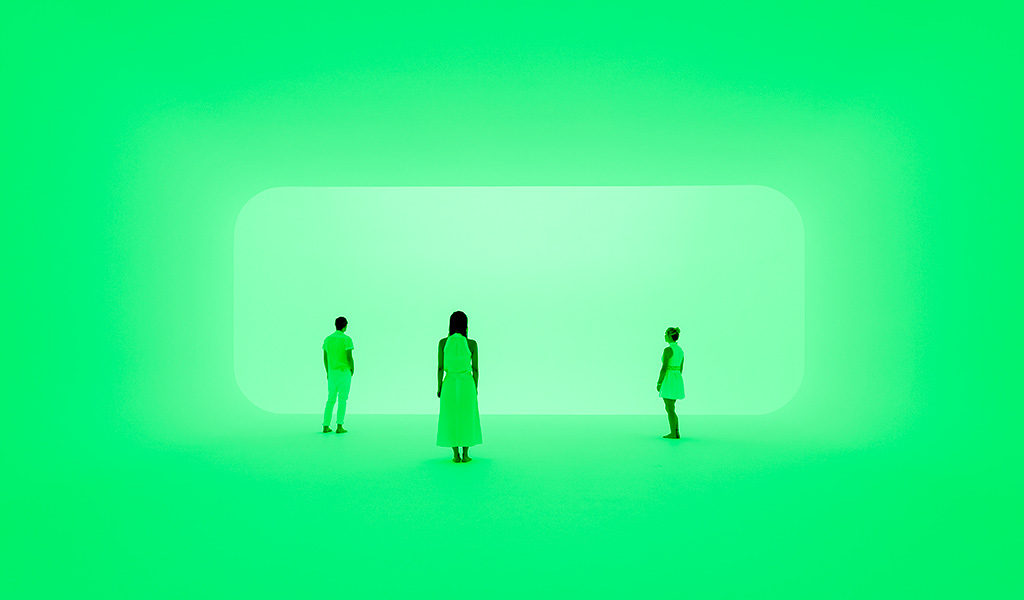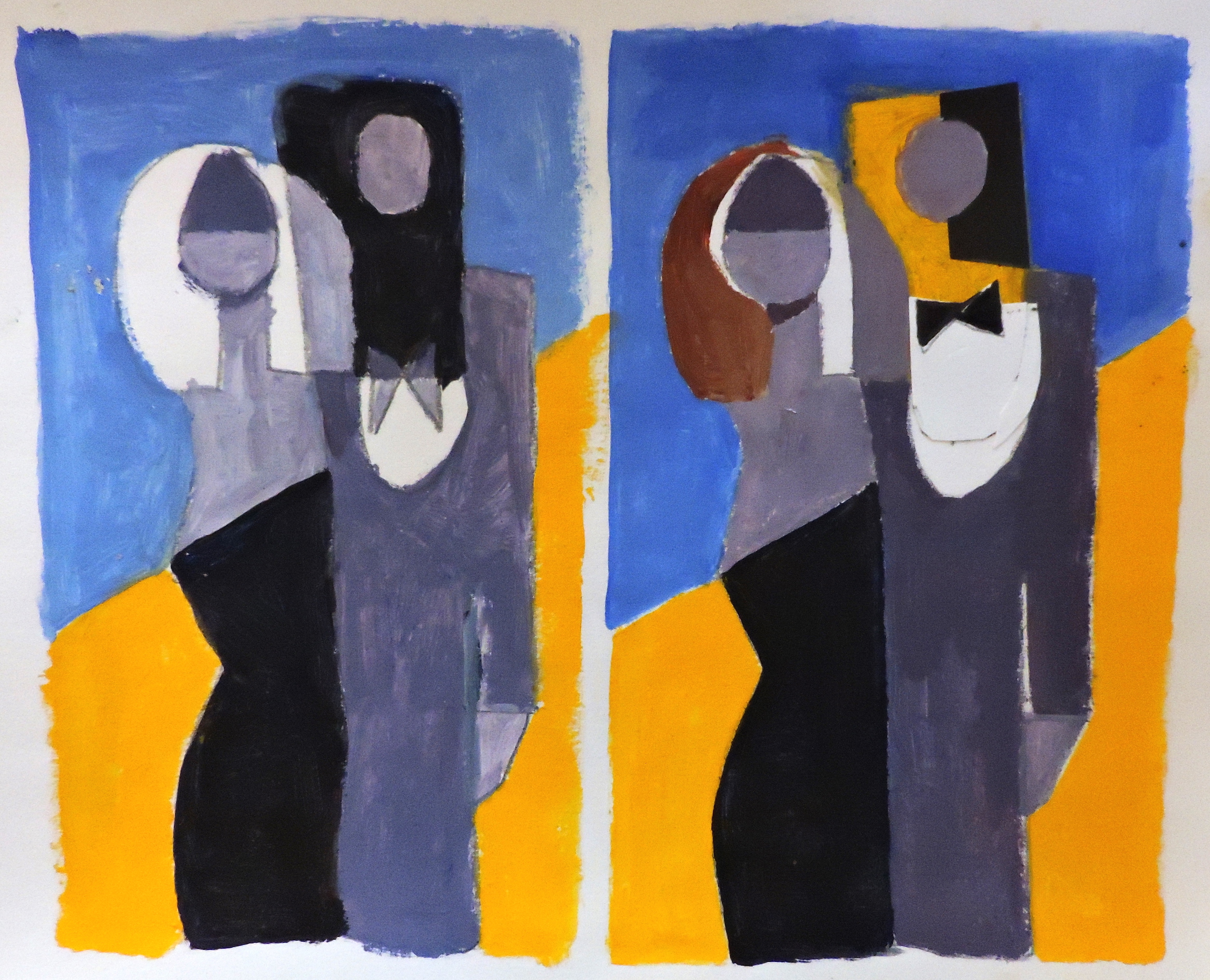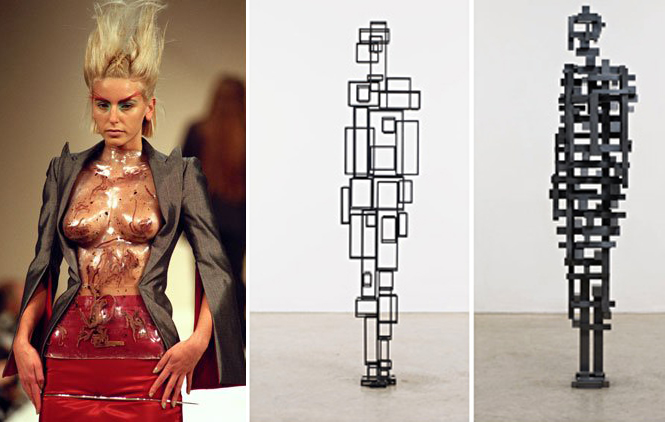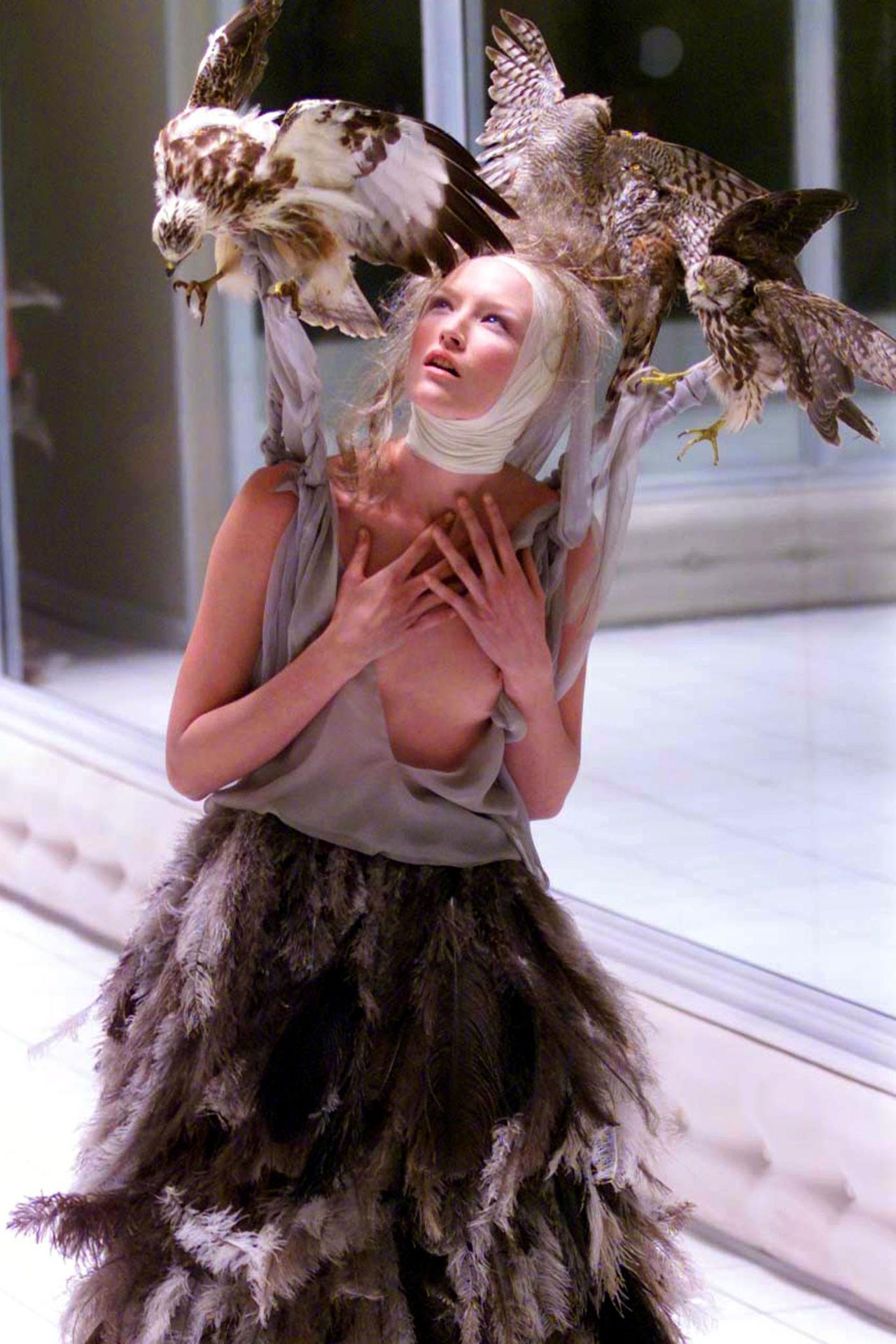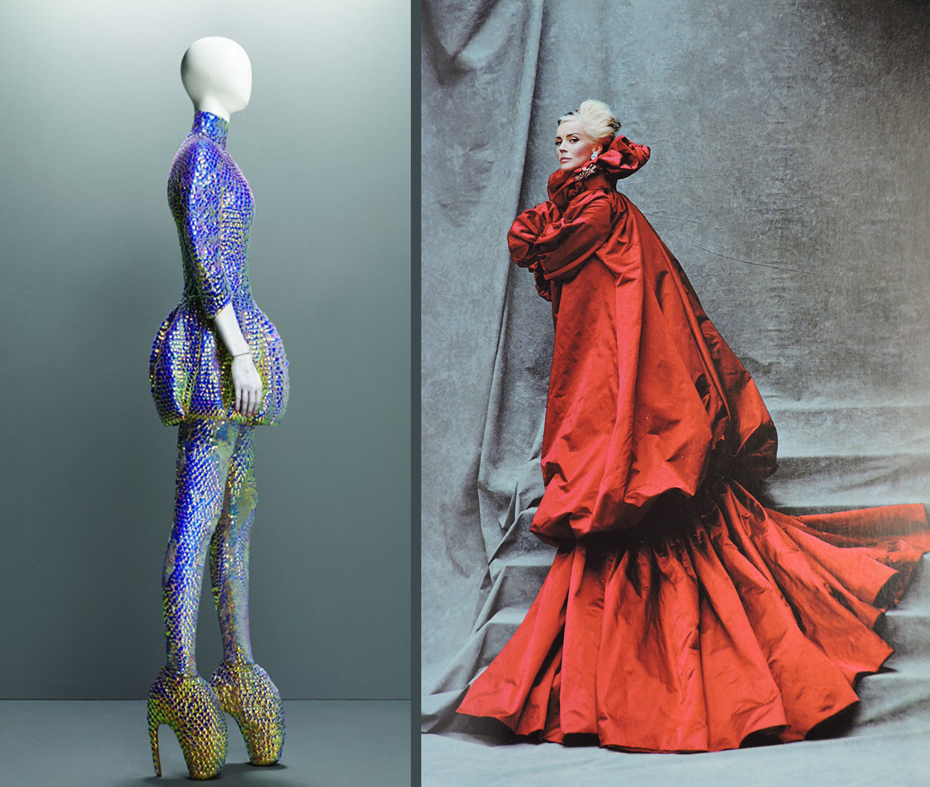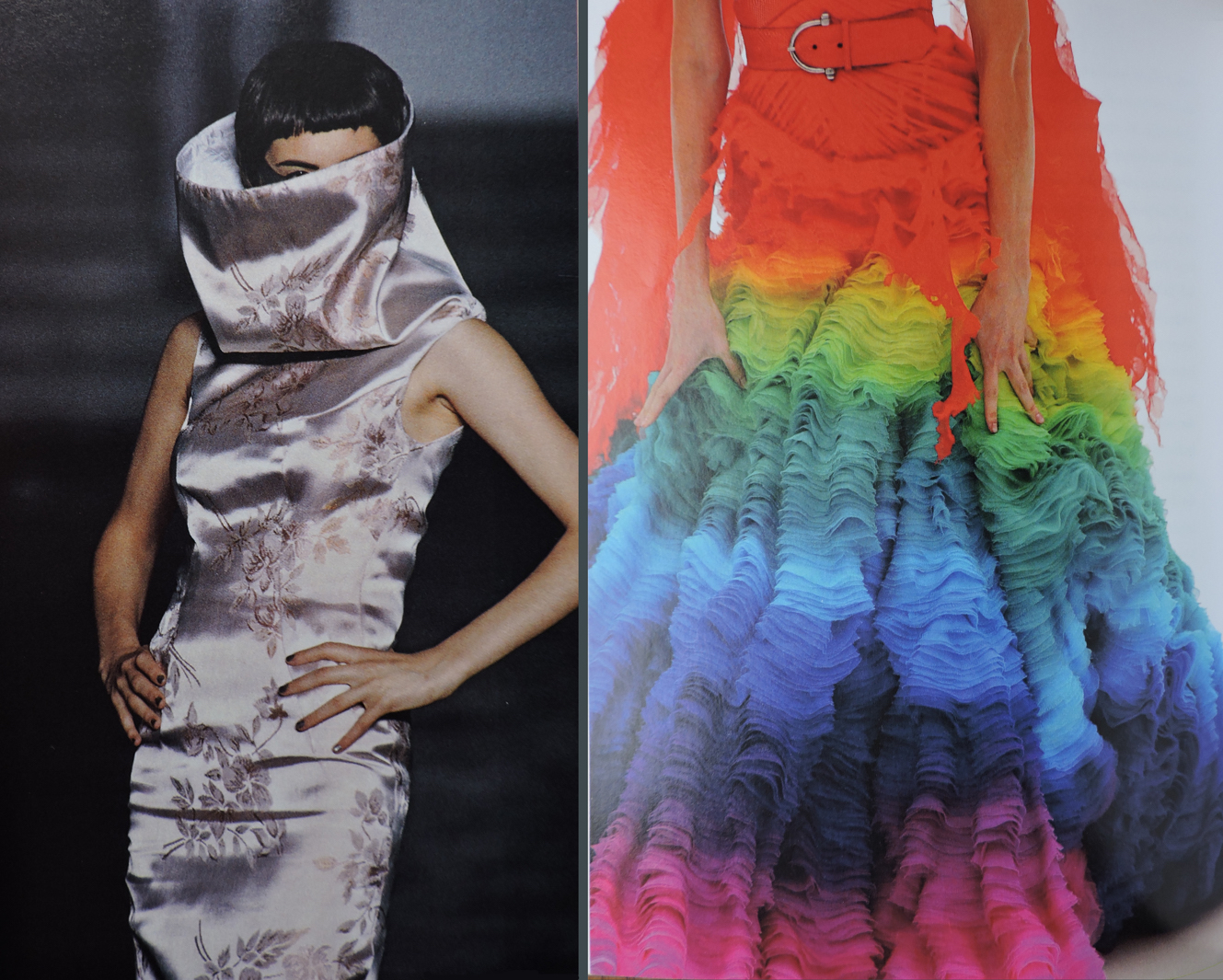What can we learn about art from fashion? At their worst, fashion and art are regarded as superficial, driven by money, vanity and social pressures. Both are elitist, excessive and subject to continual change. On the other hand, both can be fun and creative, adding pleasure and meaning to everyday things.
Fashion may be easier to define than art. Fashion has a practical side and a psychological side. People wear clothes appropriate to changing seasons, weather, social rituals and other conditions. People also wear clothes for show. If you want to attract attention, imagination counts. Clothes are not fixed items. They express personality, social conformity, daring, and individuality. Clothes can be appropriate or inappropriate for the time and place in which they appear. Make a mistake and you might appear ridiculous. Or inspired.
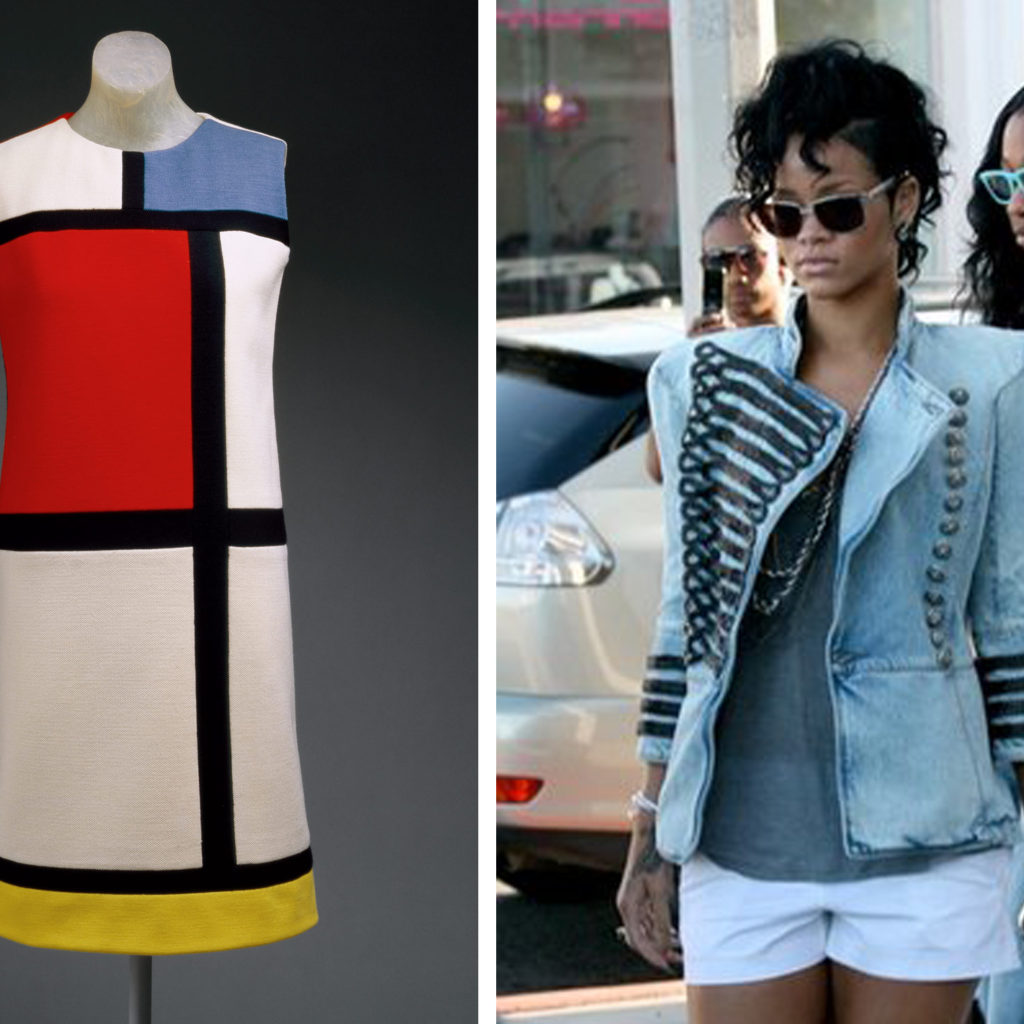
From Mondrian to Rihanna, designers take inspiration from abstract art, pop culture changes the meaning of military wear
Clothes that stand still too long can make those who wear them seem hopelessly dated, out of touch with the changing times. Clothes are subject to trends, as are people. There can be no question about this: clothes get people talking. People are judged, fairly or not, on what they wear and how they wear it.
Fashion is all about context and so is art. Jackson Pollock’s paintings made marvellous backdrops for models in the 1950s. The model above looks like she’s entered the dream world of the painting. Today’s art is all about immersion and altering environments.
We connect clothes with concepts of style, taste and coolness. These are things we admire and want to emulate. Being comfortable in your own skin. Feeling at home wherever you go, operating easily with the world around you, knowing what you can get away with.
I draw and paint pictures to relieve tension, to amuse myself, to try to make sense of the world. The tension around clothes and social events can be disconcerting at times. My wife and I discuss wardrobes for an upcoming wedding. Should we spend hundreds of dollars on a suit or dress that will only be worn once? I dig out old clothes, try on new clothes, send pants to the tailor for adjustments. Then I paint a picture of Kathleen and myself in evening wear, bodies fused together, glamorous mannequins, more than a little absurd.
Fashion demands consensus, as does art. Some styles are too outrageous or too impractical for mainstream tastes. Street fashions fight back with unpredictable results.
The one thing artists cannot control is what people will connect with, talk about and share with others. Through art and clothes we participate in a world of change and, by participating, we influence the direction of that change.
If you’re interested in theories of fashion, the site “love to know” offers a nice overview.

